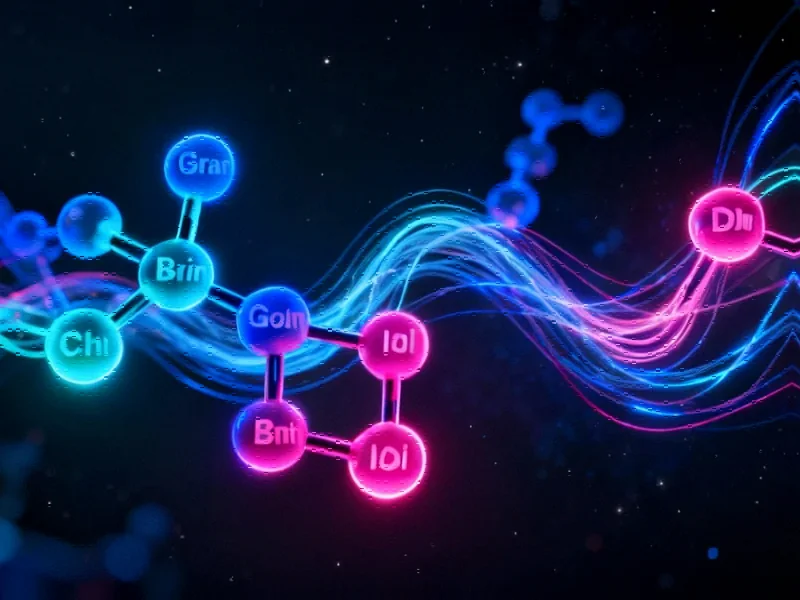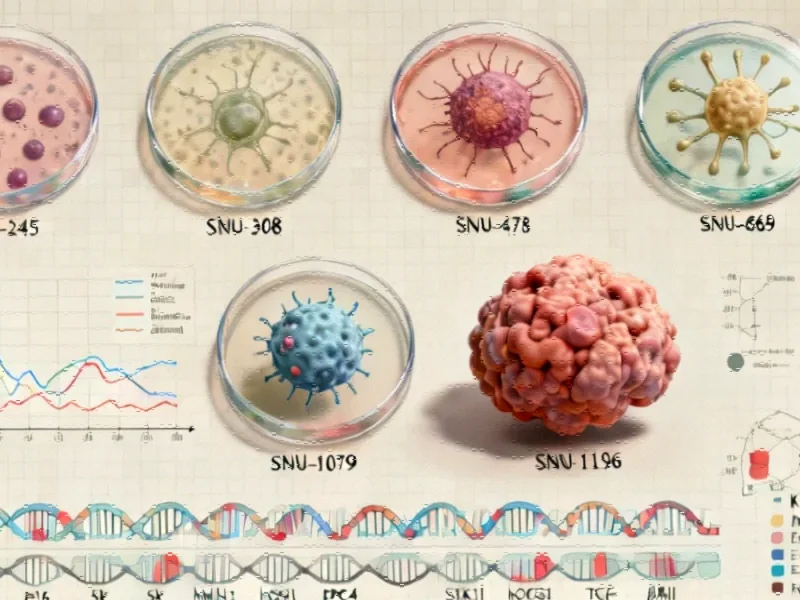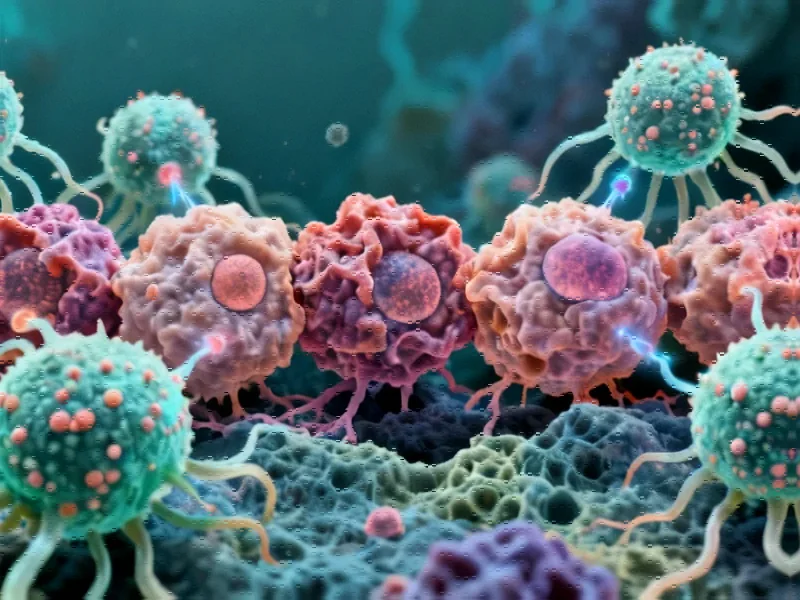Revolutionizing Computational Chemistry with Halogen-Focused Data
In a significant advancement for computational chemistry and machine learning applications, researchers have developed Halo8—a comprehensive dataset specifically designed to address the critical gap in halogen chemistry representation. This pioneering resource contains approximately 20 million quantum chemical calculations derived from 19,000 unique reaction pathways, systematically incorporating fluorine, chlorine, and bromine chemistry that has been historically underrepresented in existing datasets.
The development comes at a crucial time when machine learning interatomic potentials (MLIPs) are transforming how scientists simulate chemical processes, yet their performance remains heavily dependent on the quality and diversity of training data. “Halogen atoms appear in approximately 25% of pharmaceuticals and countless materials, yet until now, they’ve been severely underrepresented in the datasets used to train these powerful models,” explained the research team behind Halo8.
The Critical Need for Halogen Chemistry in Machine Learning
Halogen atoms play indispensable roles across multiple scientific domains. In pharmaceutical development, fluorine appears in 25% of small-molecule drugs, while chlorine and bromine serve as crucial components in materials science, particularly in organic electronics and polymer development. Despite this importance, previous quantum chemical datasets have offered limited halogen coverage, with fluorine appearing in less than 1% of structures in the foundational QM7-X dataset.
This gap has presented significant challenges for MLIPs when modeling halogen-specific reactive phenomena, including halogen bonding in transition states, polarizability changes during bond breaking, and the unique mechanistic patterns of halogenated compounds. The absence of comprehensive halogen data has constrained the transferability and applicability of trained models to complex chemical systems relevant to pharmaceutical discovery and materials design.
Innovative Methodology and Computational Breakthroughs
The Halo8 dataset was generated using a sophisticated multi-level computational workflow that achieved a remarkable 110-fold speedup over pure density functional theory (DFT) approaches. This efficiency breakthrough makes large-scale reaction sampling practical and economically feasible for the first time.
Unlike traditional approaches that focus primarily on equilibrium structures, Halo8 employs reaction pathway sampling (RPS) methodology that systematically explores potential energy surfaces by connecting reactants to products. This approach captures structures along minimum energy pathways as well as intermediate configurations encountered during pathway optimization, including transition states, reactive intermediates, and bond-breaking/forming regions absent from equilibrium-focused datasets.
This methodology represents significant related innovations in computational chemistry that parallel advances in other scientific domains.
Comprehensive Dataset Composition and Validation
Halo8 combines recalculated Transition1x reactions with new halogen-containing molecules from GDB-13, employing systematic halogen substitution to maximize chemical diversity. All calculations were performed at the ωB97X-3c level—a dispersion-corrected composite method with an optimized basis set—providing accurate energies, forces, dipole moments, and partial charges.
The dataset’s validation demonstrates that Halo8 successfully captures diverse structural distortions and chemical environments essential for reactive systems. By combining the chemical diversity of halogen chemistry with the configurational diversity of RPS, Halo8 enables the training of MLIPs that can accurately model both equilibrium properties and reactive processes involving halogens.
This development complements other recent technology advances in computational modeling across scientific disciplines.
Implications for Pharmaceutical and Materials Research
The introduction of Halo8 addresses a critical bottleneck in computational chemistry applications for drug discovery and materials science. With enhanced capabilities for modeling halogen-containing compounds, researchers can now accelerate the development of new pharmaceuticals, catalysts, and advanced materials with greater accuracy and efficiency.
The dataset’s comprehensive coverage of fluorine, chlorine, and bromine across diverse chemical environments provides the out-of-distribution structures essential for training reactive MLIPs capable of describing dynamic chemical processes. This represents a significant step forward from previous datasets that emphasized equilibrium and near-equilibrium configurations rather than reactive processes.
These computational advances occur alongside broader industry developments in technology infrastructure that support increasingly complex scientific computing requirements.
Future Applications and Scientific Impact
Halo8 serves as a valuable resource that bridges the gap between traditional computational chemistry and modern machine learning approaches. The dataset’s systematic incorporation of halogen chemistry enables more accurate predictions of reaction mechanisms, molecular properties, and dynamic behaviors in complex chemical systems.
Researchers anticipate that Halo8 will facilitate breakthroughs in multiple domains, including:
- Accelerated drug discovery through improved modeling of halogen-containing pharmaceuticals
- Advanced materials design for organic electronics and functional polymers
- Enhanced catalytic process development involving halogenated compounds
- More accurate environmental modeling of halogenated pollutants and their transformations
This comprehensive dataset represents a milestone in computational chemistry, particularly as it bridges critical gaps in our ability to model halogen chemistry accurately. As machine learning continues to transform scientific research, resources like Halo8 will play an increasingly vital role in enabling discoveries across chemistry, materials science, and pharmaceutical development.
The research team has made Halo8 publicly available to the scientific community, anticipating that it will serve as a foundation for future innovations in computational chemistry and machine learning applications. As the field continues to evolve, this dataset establishes a new standard for comprehensive, chemically diverse training data that reflects the true complexity of molecular systems encountered in real-world applications.
This article aggregates information from publicly available sources. All trademarks and copyrights belong to their respective owners.
Note: Featured image is for illustrative purposes only and does not represent any specific product, service, or entity mentioned in this article.



